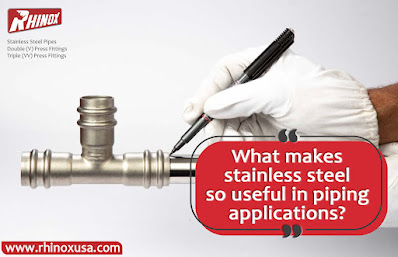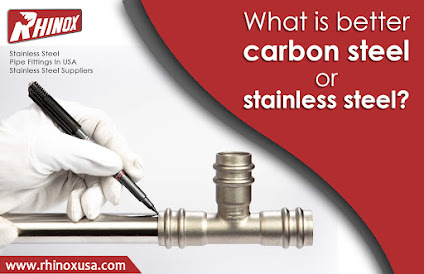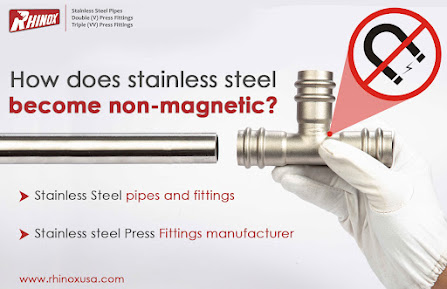What makes stainless steel so useful in piping applications
Pipelines
transmit drinking water around the world over millions of miles. To provide
drinking quality water and long service life, these pipelines must offer
corrosion resistance to the water itself, soil composition, and chemical
treatment. Most applications have shown that Type 316 stainless steel (2-2.3%
Mo) provides the necessary corrosion resistance while remaining competitive in
price with other piping materials.
Stainless
steel pipes
- Superior
corrosion protection -
Stainless
steel plumbing resists corrosion better than both carbon steel and
cast iron or ductile iron when exposed to water and biocides. As a result,
pipelines last longer.
- Hygienic
qualities -
Stainless steels are inert in water because of their extremely high
passive film stability. Alloying elements (Chromium and Nickel) do not
leach beyond safe levels. Consequently, drinking water is of higher
quality.
- The friction coefficient – Compared to
steel with a cement lining or to corroded steel, the friction coefficient
in the lined steel is lower resulting in a reduction of water pressure
loss. As a result of this, it is easy to reduce the pipe's internal
diameter and reduce capital costs. Also, this helps prevent deposits from
adhering as well as bacteria from colonizing. Additionally, they can
handle high flow rates.
- Strong and ductile - Duplex
stainless
steel water pipes exhibit a higher degree of mechanical ductility
than carbon steel and cast iron. Regardless of the corrosion allowance,
the wall thickness of the pipe can be reduced (resulting in cost savings)
without compromising the pipe's quality. Having a more ductile design may
also boost security, such as during an earthquake.
- Corrosion and erosion –
Duplex stainless steels have a much better corrosion-resistant property
than carbon steel, especially if sand is present.
- Easy to fabricate -
They are readily formable, machinable, and welded, and their ductility
gives them the ability to be easily modified and installed. There are also
multiple forms of these products available.
- Maintenance-friendly -
By reducing leaks to less than 5% as a result of corrosion resistance and
ease of welding your maintenance is drastically reduced, which further
reduces your expenses. Because of the increasing costs of water and water
treatment, stainless steel plumbing fittings
are becoming increasingly relevant.
- High durability -
Stainless Steel is suitable for use both in pure and polluted waters as
well as in the atmosphere. Therefore, it is a cost-effective solution for
use for a long time and does not contaminate the environment.
- Recycling -
Stainless steel is a 100% recyclable material, so a portion of their
initial cost may then be recovered.




Comments
Post a Comment